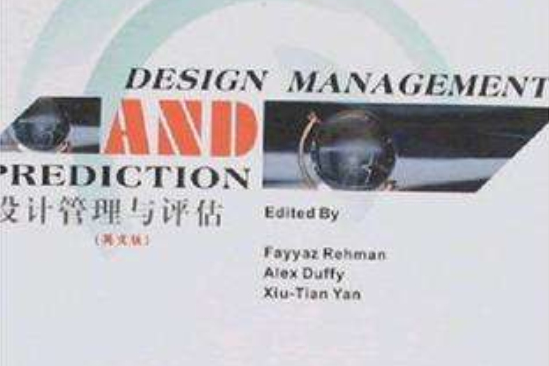作者簡介
作者:(英)雷曼 等
內容簡介
《設計管理與評估(英文版)》主要內容:Design process is considered to be the most important and crucial phase of the product life cycle,because it affects all the downstream stages of the product life cycle in terms of cost and quality of the decisions made at different levels of an enterprise regarding a product/system to be designed.Management of the “Design Process” involves an approach where an organization makes decisions related to the design process in customer/marked oriented fashion as well as optimizing the design process.Design Management further provides a link between “Design Process”,“Technology”,“Tools & Methods” and “Management” at different levels of an organization.The contents of this book present in detail ten broad topics related to the field of ‘Design Management’and are developed as course notes of one module (Design Management and Prediction) of MSc in Advanced Design and Manufacture funded by European Commission through their Asia Link——FASTAHEAD project.
目錄
1 Manufacturing Trends & Comparisons
1.1 History of Productivity and Employment in Manufacturing
1.2 Research in Manufacturing
1.3 Timeline of Different Manufacturing Methods
1.4 Reengineering the Manufacturing Traits
2 Costs and Good Product Development
2.1 Advantages of Early Product Introduction
2.2 Investment in Product Development
2.3 Project Life Cycle Costs
2.4 Product Costing and Design
2.5 Life Cycle Costs and Control
3 Approaches to Integrated Product Development (IPD)
3.1 Need Situation for a New Product
3.2 Interdisciplinary Product Development
3.3 Quality Control in Integrated Product Development
3.4 Life Cycle Team Efforts
3.5 Sequential Vs Concurrent Engineering
3.6 Typical Deliverables in Product Development Process
3.7 Concurrency among Phases of Product Development Process
3.8 Lead Time Reduction
3.9 Concurrent Engineering Benefits
3.10 Concurrent Engineering Drawbacks
3.11 Aspects of Design Development
4 Nature of Design and Design Process Models
4.1 What Is Design?
4.2 What Is a Product?
4.3 Design and Society
4.4 Types of Design
4.5 Characteristics of Design Activity
4.6 Design Degrees of Freedom
4.7 Types of Designers
4.8 Design Process Models
5 Team Working and Organizational Structures
5.1 What Is Team Work?
5.2 Company's Activities within Product Development
5.3 Management Styles
5.4 Organization of a Business Unit
5.5 Management Responsibilities in Product Development
5.6 Product Development Team
5.7 Function-Project Relationships
5.8 Difficulties in the Management of Product Development Process
5.9 Concurrent Engineering Teams
5.10 Synergy and Team Work
5.11 Elements to Team Cooperation
6 Design Complexities and Design Coordination
6.1 Design Complexities
6.2 Design Coordination
7 Design Performance
7.1 What Is Performance?
7.2 EFQM Model of Business Excellence
7.3 Achievement of European Quality Award
7.4 Overall Competitiveness
7.5 Product Development Performance
7.6 Benchmarking Performance
7.7 Issues in Product Development Performance
7.8 Product Development Performance Model
7.9 Summary of Discussion
8 Innovation in Design
8.1 What Is Innovation?
8.2 Intellectual Property
8.3 Concept of a Patent
9 Design Process Optimization
9.1 What Is Optimization?
9.2 Process Modelling Techniques
9.3 PERT/CPM Method
9.4 Gantt Chart Method
9.5 IDEF Method
9.6 Dependency Structure Matrix (DSM) Method
10 Collaborative and Distributed Design
10.1 Project Management
10.2 Crossing Organisation of Business Units
10.3 Efficient Time Planning and Management

